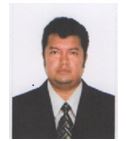
Jose Melena
Facultad de Ciencias del Mar. Universidad Estatal PenÃnsula de Santa Elena. Avda. Principal La Libertad – Santa Elena
Title: Spawning Induction and Early Larval Development of the Pacific Thorny Oyster Spondylus crassisquama (Lamarck, 1819) under Controlled Conditions
Biography
Biography: Jose Melena
Abstract
In Ecuador, the bivalves of genus Spondylus, mainly S. crassisquama and S. leucacanthus, are very seriously threatened by overfishing. This research has implemented experimental protocols for spawning induction and early larval development of S. crassisquama under controlled conditions. This laboratory study has been led at the experimental unit from the Academic practices, Production and Biological Research Centre (CIBPA) at the Santa Elena Peninsula State University (UPSE), located in Mar Bravo beach, Santa Elena Province, Ecuador. A total of 4 individuals of S. crassisquama broodstock (weight, 729,8 ± 113,4 g; length, 138,9 ± 11,9 mm; height, 105,6 ± 5,8 mm) were collected from Ayangue beach and acclimated in 300 L plastic tanks with treated seawater. Briefly, the experimental protocol for spawning induction was based on heat shock (20°C for 1 h and 30°C for 1 h) on broodstock at least three consecutive times by two days. After spawning, collected sexual material was released for external fertilization process. As main results, first and second cellular division were reported at 1,6 h post-fertilization; later cellular divisions, including trochophore stage, appeared in the next 9 h post-fertilization, while type D (veliger) stage was described at 22 h post-fertilization. Umboned larvae were reported at day 10 post-fertilization. Early larval population displayed less of 2% survival at day 10 post-fertilization. This work describes for the first time the spawning induction and early larval development of S. crassisquama in captivity. These results will encourage the larval culture of S. crassisquama for future restocking processes of natural populations.

